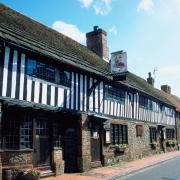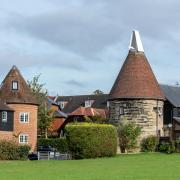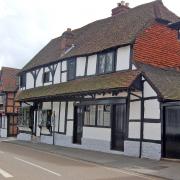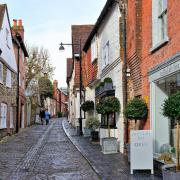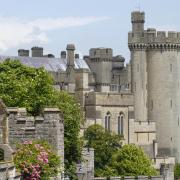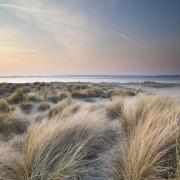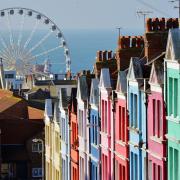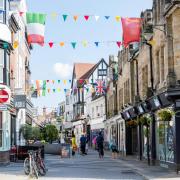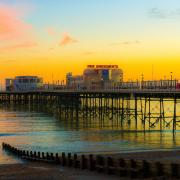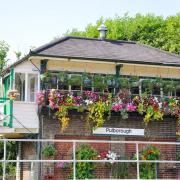Clive Agran investigates East and West Wittering, known for their beautiful beaches – and a connection to motoring history
No one raises so much as an eyebrow when spotting a Rolls-Royce gliding around East or West Wittering, for this is precisely the sort of highly respectable neighbourhood where these splendid vehicles look and feel very much at home.
Even so, when on 22 April every year dozens of Phantoms, Silver Clouds and Corniches converge on this corner of the Sussex coast just to the south of Chichester, it causes quite a stir. Members of the Rolls-Royce Enthusiasts' Club come on the anniversary of his death to celebrate the life of Sir Henry Royce, the co-founder of Rolls-Royce, who moved to West Wittering in 1917 and died there aged 70 in 1933.
Elmstead, his enormous house, has since been split into three handsome homes. Jackie Gray lives in the part where the enthusiasts gather around Sir Henry's old workbench every year as the local vicar conducts a short thanksgiving service.
"We then have a glass of wine before going somewhere nice for lunch," she explains.
Although he had never previously owned a Rolls-Royce, Jackie's late husband David fell under the spell of the iconic marque, acquired no fewer than three magnificent 'Rollers' and became chairman of the southern section of the Rolls-Royce Enthusiasts' Club, none of which, presumably, would ever have happened if he hadn't bought part of Sir Henry's old house.
Although it isn't a Rolls-Royce, Heather Brooks' car is comfortable enough and certainly better suited to the narrow lanes as she kindly shows me around. A member of the local historical society, she drives me to a small exhibition at Bracklesham Barn that her son William has mounted to commemorate 'Exercise Fabius III' - a dress rehearsal for D-Day staged at Bracklesham Bay by troops of the 3rd Canadian Infantry Division, who one month later landed on Juno Beach.
Bracklesham Bay was chosen because its topography is ideal. And it's not entirely coincidental that the Germans, too, had identified it as a likely landing target and might well have built their bridgehead here had World War II gone their way.
It was certainly looking promising from their perspective just before 4pm on 23 August 1940 when 150 Lutwaffe aircraft attacked Portsmouth docks. Among them was a Heinkel from KG55 squadron which was intercepted by Spitfires and badly damaged. The pilot, Lieutenant Metzger, crash-landed on the sand below him at West Wittering. On the same stretch of beach were soldiers from the 2nd Battalion Duke of Cornwall's Light Infantry who were engaged in target practice. They sprinted over to lift the wounded pilot from his seat, laid him on the ground and dressed his wounds.
Stories sprung up that are still circulating that the crew was shot, which would have constituted a possible war crime. But Lieutenant Metzger, who was tracked down in Bonn in 1979, confirmed that the crew were all dead before the plane hit the ground. They were buried with full military honours in Chichester cemetery but were exhumed in 1962 and reburied in the German Cemetery at Cannock Chase, Staffordshire.
By contrast with World War II, World War I had been far less traumatic for the inhabitants of the Witterings as it was one of those very rare places that suffered no fatalities at all. There is a plaque In St Anne's Anglican Church in East Wittering which bears the inscription, "1914-1918 no lives were lost from this Parish. All returned safely. LAUS DEO."
However a World War I hero is buried in the graveyard next to the beautiful 13th century parish church in neighbouring Earnley. Major William Barnsley-Allen VC, D.S.O., M.C. and Bar was born in Sheffield in 1892, qualified as a doctor in June 1914 and was commissioned into the Royal Army Medical Corps two months later. The citations that accompany his four awards, which include the Victoria Cross, testify to his enormous courage and total disregard for his own safety. He was gassed and almost certainly a serious casualty of post-traumatic stress disorder. After the war, his marriage broke up and he increasingly sought solace in drink and drugs. He moved to Bracklesham and in July 1932 he crashed his car into a ditch and was charged with drink-driving. At Chichester Magistrates' Court he was fined a pound and his licence was suspended for five years. In his defence, it was stated that, "He had suffered as no other man in England had suffered."
He died of a drug overdose on 27 August, 1933.
Heather pulls a few weeds from his grave before we visit a curious relic of World War I that is just around the corner. Apart from the fact that it opened in 1918 and closed the following year, very little is known about Earnley Airfield. Apparently it was a landing ground for aircraft of the School of Aerial Co-operation with Coast Defence Batteries. The only take-offs and landings today are courtesy of the birds on the adjacent Medmerry Nature Reserve. After enjoying what there is to see there, wildlife enthusiasts can follow the footpaths that link up with the RSPB reserve in nearby Pagham Harbour.
Driving along the narrow lanes, Heather explains that they can become horribly crowded at the height of the summer when visitors flock to the splendid beaches, in particular the sandy one at West Wittering where the low gradient and lack of rip-tides and obstacles make it especially suitable for water sports.
As well as lovely beaches and several caravan parks, Bracklesham has been home to a number of holiday camps, the biggest of which was Pontins. Previously labouring under the somewhat clumsy title of Sussex Ideal Holiday Chalets, it was built in the 1930s and bought by Fred Pontin in 1947. Extensively rebuilt in the 1960s with all-new brick chalets, it could accommodate 1,300 holidaymakers before it closed in 1985.
A smaller holiday camp in the area was created in the late 1940s by Francis Lyndhurst. His son Joe helped run it and fell in love with one of the dancers who worked a summer season at the camp. She became pregnant and had a son, Nicholas, who later starred as Rodney Trotter in Only Fools and Horses and now lives nearby with his wife and son.
More a legend than a mere celebrity, Keith Richards of the Rolling Stones is evidently another huge fan of the Witterings. Richards bought what is probably best described as an estate way back in 1966 and, although his principal home is in the States, he still regularly returns to Sussex. When a collection was launched to raise money for much-needed repairs to the Memorial Hall in West Wittering, it was suggested that the target of £15,000 would be reached if everyone gave £1.
Keith Richards was approached and generously donated the whole amount.
Also still living in the area are his son and daughter with Anita Pallenberg. Marlon, named after Brando, was born in 1969 while Keith's daughter, born in 1972, was christened Dandelion but is known as Angie. Was she the inspiration for the Richards/Jagger ballad, Angie? Either way, Heather assures me Angie's a "lovely lady".
More…
- 10 of the best restaurants in Horsham - The market own of Horsham is home to some delightful restaurants and pubs. We round up some of the best








